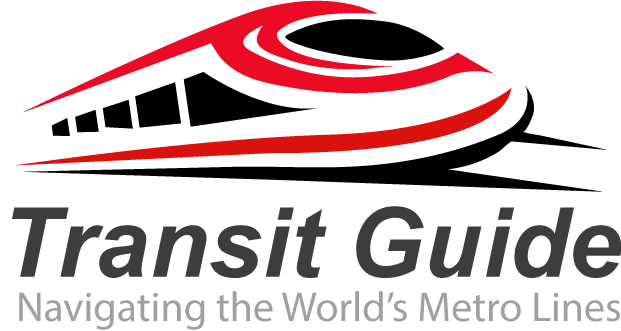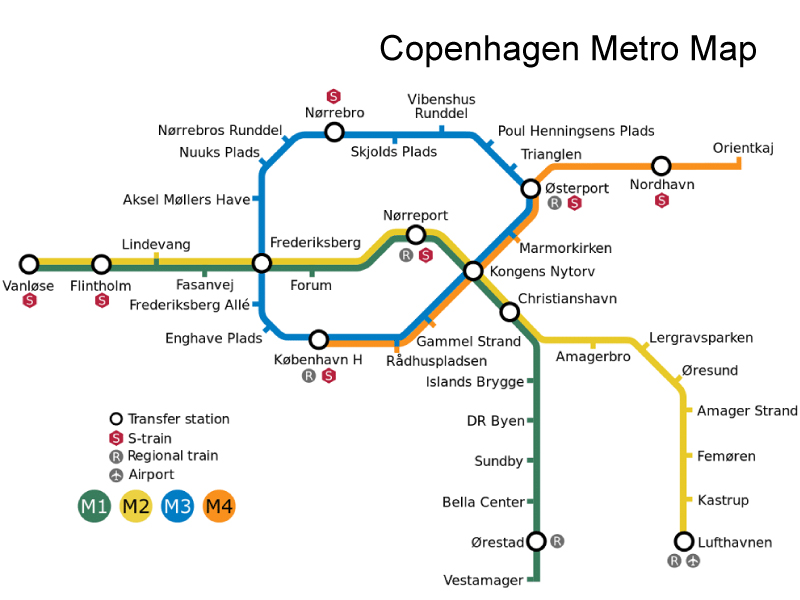The Copenhagen Metro stands as one of Europe’s most efficient and modern urban transportation systems, serving Denmark’s capital with remarkable precision and reliability. Since its inauguration in 2002, this automated rail network has transformed how residents and visitors navigate the vibrant city of Copenhagen.
Overview of Copenhagen Metro Lines
The Copenhagen Metro operates four distinct lines that connect key areas across the city and surrounding regions. The M1 (Green Line) and M2 (Yellow Line) form the original network, running from Vanløse in the northwest to Vestamager and the airport respectively. The newer M3 (City Circle Line), completed in 2019, creates a circular route through Copenhagen’s city center, while the M4 (Blue Line) extends service to the northwestern suburbs.
Key Features and Technology
What sets the Copenhagen Metro apart is its fully automated operation system. Trains run without drivers, utilizing advanced computer systems for navigation and safety. The network features 39 stations across approximately 21 kilometers of track, with trains operating 24/7 on weekends and until 1 AM on weekdays.
The metro system showcases impressive engineering, particularly the M3 line, which runs entirely underground through Copenhagen’s historic city center. This 15.5-kilometer circular line required sophisticated tunneling techniques to avoid disturbing the city’s centuries-old infrastructure.
Coverage and Connectivity
The Copenhagen Metro provides seamless connections to Copenhagen Airport, making it incredibly convenient for international travelers. The system integrates perfectly with other public transportation modes, including buses and S-trains, through the unified ticketing system managed by DOT (Din Offentlige Transport).
Popular destinations accessible via the metro include:
- Copenhagen Airport (Terminal 3)
- Kongens Nytorv (city center shopping district)
- Nørreport Station (major transportation hub)
- Islands Brygge (waterfront recreation area)
- Amager Strand (beach destination)
Ticketing and Pricing
The metro operates on a zone-based pricing system, with tickets valid across all public transportation in the Greater Copenhagen area. Passengers can purchase single tickets, day passes, or use the convenient DOT app for mobile ticketing. The Rejsekort (travel card) offers the most economical option for frequent travelers.
Accessibility and Design
Copenhagen Metro stations feature modern Scandinavian design with excellent accessibility features. All stations include elevators, making the system fully wheelchair accessible. The distinctive platform screen doors enhance safety while maintaining the sleek, minimalist aesthetic that characterizes Danish design.
Future Developments
The Copenhagen Metro continues expanding, with the M4 line extension to Sydhavn scheduled for completion in the mid-2020s. These developments reflect the city’s commitment to sustainable transportation and reducing carbon emissions.
Tips for Visitors
International visitors will appreciate the metro’s user-friendly design and multilingual signage. The frequent service intervals (2-3 minutes during peak hours) minimize waiting times, while the clean, safe environment makes it ideal for exploring Copenhagen’s attractions.
The Copenhagen Metro represents a model of modern urban transportation, combining cutting-edge technology with practical design to serve one of the world’s most livable cities efficiently and sustainably.

